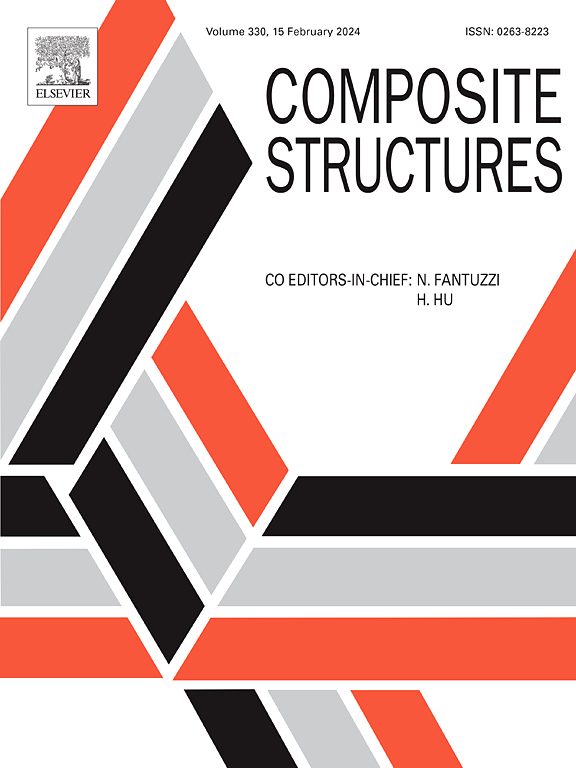Investigation of temperature and structural configuration effects on the mechanical properties of CFRP bolted joints
IF 6.3
2区 材料科学
Q1 MATERIALS SCIENCE, COMPOSITES
引用次数: 0
Abstract
Composite bolted joints are extensively employed in structural applications and have garnered notable interest in composite component design. This research examined how temperature, hole size, and washer configuration influence the composite bolted joint’s tensile properties, using 3D digital image correlation (DIC) and acoustic emission (AE) methods. The study analyzed load–displacement response, surface strain evolution, damage mode characterization, and damage initiation of joint throughout the tensile testing. The strain and displacement fields of the joint surfaces effectively revealed the competing evolution mechanisms between axial tensile effect and secondary bending effect. The k-means++ clustering algorithm and sentry function were employed to accurately identify damage modes and initiation in the joints. The results indicate that temperature, hole diameter, and washer configuration significantly influence joint strength, with the dominance of axial tensile effects and secondary bending effects varying depending on the load level. Double-sided washers delay damage initiation, while an increase in hole diameter causes damage to initiate earlier. High temperatures significantly delay the initiation of various damage modes.
温度和结构形式对CFRP螺栓连接力学性能影响的研究
复合材料螺栓连接广泛应用于结构应用,并引起了复合材料构件设计的关注。本研究采用三维数字图像相关(DIC)和声发射(AE)方法,研究了温度、孔尺寸和垫圈配置对复合螺栓连接拉伸性能的影响。在整个拉伸试验过程中,研究分析了节点的载荷-位移响应、表面应变演化、损伤模式表征和损伤起始。接头表面的应变场和位移场有效地揭示了轴向拉伸效应和二次弯曲效应之间的竞争演化机制。采用k-means++聚类算法和哨兵函数准确识别接头损伤模式和起裂。结果表明,温度、孔直径和垫圈配置对接头强度有显著影响,轴向拉伸效应占主导地位,二次弯曲效应随载荷水平而变化。双面垫圈可以延缓损伤的发生,而增大孔径则会使损伤发生得更早。高温显著延缓了各种损伤模式的发生。
本文章由计算机程序翻译,如有差异,请以英文原文为准。
求助全文
约1分钟内获得全文
求助全文
来源期刊

Composite Structures
工程技术-材料科学:复合
CiteScore
12.00
自引率
12.70%
发文量
1246
审稿时长
78 days
期刊介绍:
The past few decades have seen outstanding advances in the use of composite materials in structural applications. There can be little doubt that, within engineering circles, composites have revolutionised traditional design concepts and made possible an unparalleled range of new and exciting possibilities as viable materials for construction. Composite Structures, an International Journal, disseminates knowledge between users, manufacturers, designers and researchers involved in structures or structural components manufactured using composite materials.
The journal publishes papers which contribute to knowledge in the use of composite materials in engineering structures. Papers deal with design, research and development studies, experimental investigations, theoretical analysis and fabrication techniques relevant to the application of composites in load-bearing components for assemblies, ranging from individual components such as plates and shells to complete composite structures.
 求助内容:
求助内容: 应助结果提醒方式:
应助结果提醒方式:


